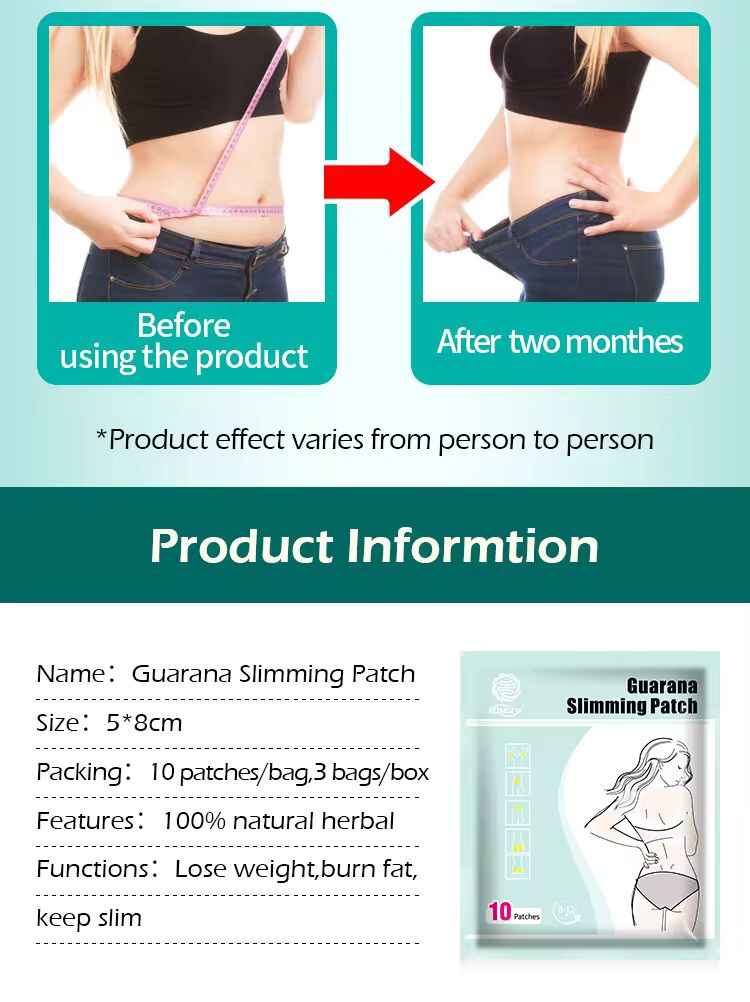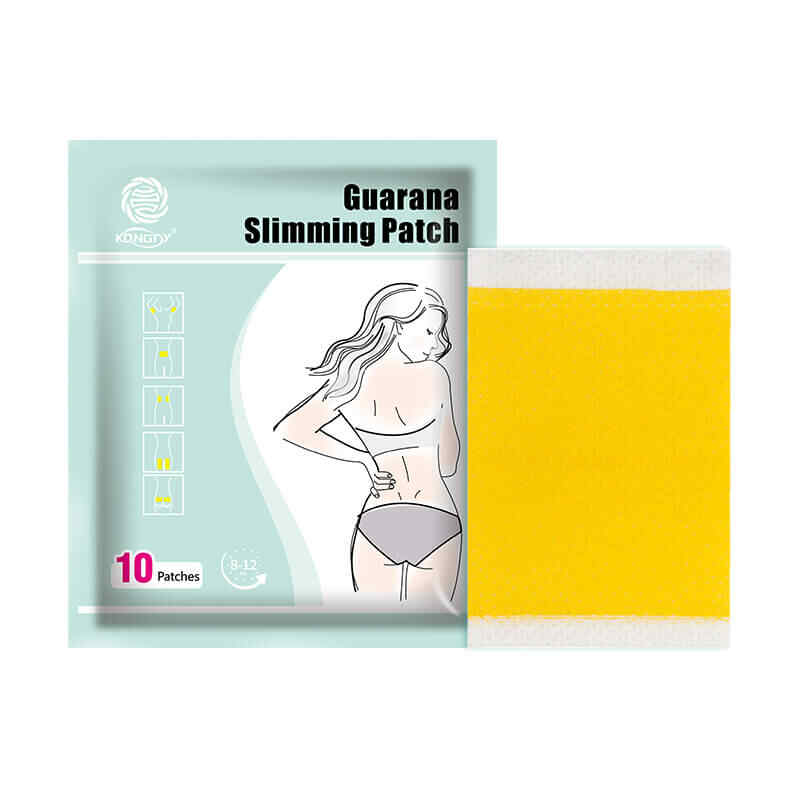How Long Does It Take to Develop Custom Transdermal Slimming Patches?
In the competitive weight management industry, Custom transdermal slimming patches have become a sought-after solution for businesses that want to deliver innovative and convenient products. However, one of the most common questions asked by entrepreneurs and health brands is: How long does it take to develop Custom transdermal slimming patches?
The timeline depends on several factors, including the role of the transdermal slimming patches Manufacturer, collaboration with an OEM partner, the level of customization required, and regulatory approvals. In this article, we will break down the development process step by step and explore realistic timeframes, so you can better plan your product launch.

1. Understanding the Development Process
When working with a transdermal slimming patches Manufacturer or transdermal slimming patches Supplier, development typically follows structured stages. These include research and development (R&D), formulation, testing, regulatory compliance, branding, and mass production. Each phase requires careful attention to detail to ensure both safety and effectiveness.
The involvement of a transdermal slimming patches OEM partner is especially valuable since they already have the infrastructure, scientific expertise, and regulatory experience to speed up the process. Businesses can save months compared to starting from scratch.
2. Key Stages and Estimated Timelines
Stage 1: Research & Development (2–4 Weeks)
At the beginning, the manufacturer and client define product goals. Do you want patches that emphasize fat-burning, appetite control, or metabolism enhancement? The Custom transdermal slimming patches design will depend on the chosen active ingredients and delivery mechanism.
Ingredient selection and feasibility testing.
Compatibility checks for transdermal delivery.
Review of existing formulas from the transdermal slimming patches OEM library.
Stage 2: Formulation & Prototype Development (4–6 Weeks)
Once the concept is clear, prototypes are created. This involves combining selected ingredients with a suitable adhesive and patch material.
Initial samples are developed for internal evaluation.
Adjustments are made for stability, release rate, and comfort.
A transdermal slimming patches Manufacturer will often provide several prototype options.
Stage 3: Safety & Efficacy Testing (6–12 Weeks)
Testing is crucial. Even if you are working with proven ingredients, ensuring stability, safety, and consistent performance is essential.
Lab analysis for ingredient potency and safety.
Patch adhesion and skin sensitivity studies.
Small-scale consumer trials (optional).
Depending on the region and regulations, this stage can be short or extended. In markets with stricter requirements, timelines may increase.
Stage 4: Regulatory Compliance (4–8 Weeks)
Before a product reaches the market, compliance is mandatory. A reliable transdermal slimming patches Supplier or OEM partner can help navigate this stage.
Preparation of required documentation.
Ingredient approval verification.
Labeling compliance with local authorities.
Stage 5: Branding & Packaging Design (2–4 Weeks)
For Private Label transdermal slimming patches, packaging plays a major role in brand positioning.
Logo, box, and patch packaging design.
Printing and material sourcing.
Consumer-oriented design that reflects brand identity.
Stage 6: Mass Production (4–6 Weeks)
Once everything is finalized, large-scale manufacturing begins. Lead time depends on:
The capacity of the transdermal slimming patches Manufacturer.
Order size and material availability.
Quality control processes before final shipment.
3. Total Timeline: From Idea to Market
If we combine all stages, the average timeline to develop Custom transdermal slimming patches is 4 to 8 months.
Faster route (4–5 months): Working with an experienced transdermal slimming patches OEM that already has proven formulas and regulatory knowledge.
Longer route (6–8 months): When businesses require extensive customization, unique formulations, or operate in highly regulated markets.
4. Factors That Influence Development Time
Level of Customization
Pre-existing formulas speed up the process.
Completely new ingredient blends require more testing.
Manufacturer Expertise
A seasoned transdermal slimming patches Manufacturer with strong R&D can shorten timelines.
Regulatory Environment
Countries with stricter requirements may extend approval timelines.
Order Volume
Large orders may add to production time, while smaller batches are quicker.
Private Label vs. Custom Development
Private Label transdermal slimming patches are ready-to-go, cutting down time to just 1–2 months.
Custom transdermal slimming patches require longer but offer exclusivity.
5. Why Partnering With the Right Supplier Matters
The difference between a smooth 4-month development and a delayed 9-month struggle often comes down to the choice of partner. A trusted transdermal slimming patches Supplier not only ensures efficient production but also provides compliance guidance and continuous support.
Look for:
Experience in transdermal slimming patches OEM projects.
Proven track record in Custom formulations.
Strong quality control certifications (GMP, ISO, etc.).
Transparent communication and realistic timelines.
6. Balancing Speed and Quality
While speed to market is important, businesses should avoid rushing at the expense of safety and brand reputation. A balance between efficiency and thorough testing ensures that Custom transdermal slimming patches meet consumer expectations and comply with regulations.
Conclusion
Developing Custom transdermal slimming patches takes careful planning, collaboration with the right Manufacturer, and commitment to quality. On average, you should expect a timeline of 4 to 8 months, depending on customization level and compliance requirements.
For startups or businesses looking to launch quickly, Private Label transdermal slimming patches may be a faster option. However, for those seeking differentiation and brand exclusivity, investing in Custom development through a reliable transdermal slimming patches OEM is well worth the effort.
Related Questions and Answers
Q1: Can a transdermal slimming patches Supplier help with regulatory approvals?
A1: Yes, experienced suppliers often provide documentation and compliance support to streamline approvals.
Q2: What’s the main difference between Private Label and Custom transdermal slimming patches?
A2: Private Label offers ready-made formulas with your branding, while Custom patches are designed with unique formulations tailored to your market.
Q3: How do I choose the right transdermal slimming patches Manufacturer?
A3: Look for certifications, R&D capabilities, OEM experience, and a proven track record in the slimming and wellness industry.
Q4: Is it possible to speed up development?
A4: Partnering with an OEM that already has tested formulations and regulatory experience can reduce the timeline significantly.
Q5: Do Custom transdermal slimming patches cost more than Private Label?
A5: Yes, Custom development typically requires higher upfront investment, but it provides exclusivity and stronger brand positioning.






